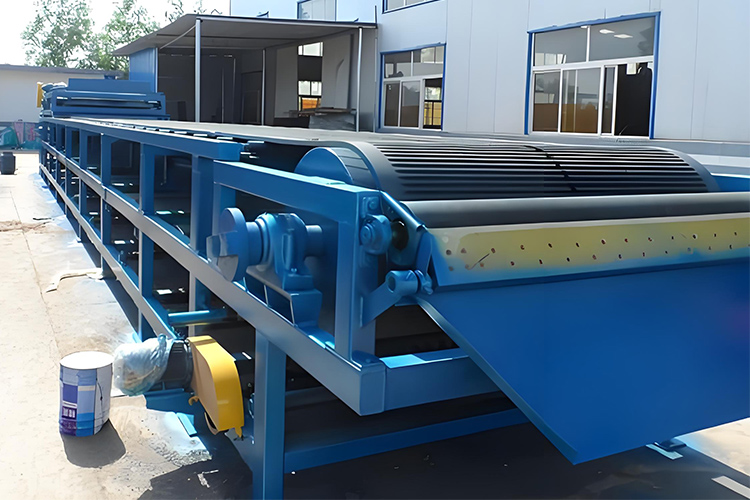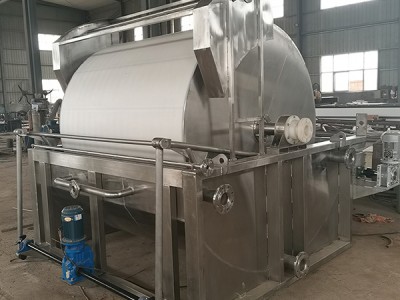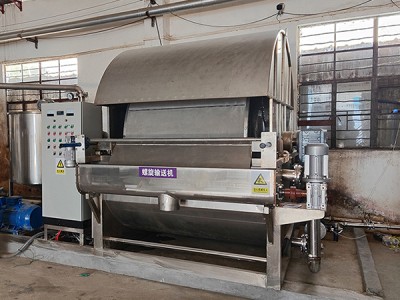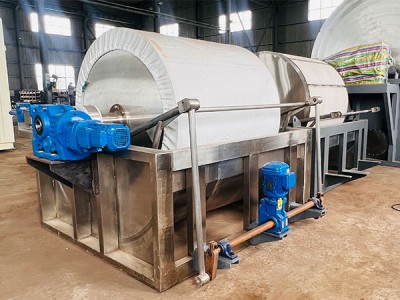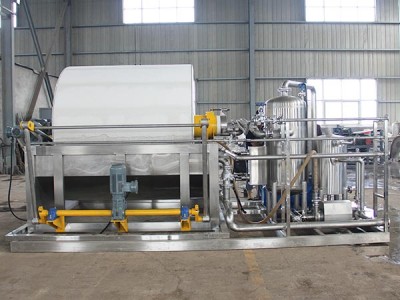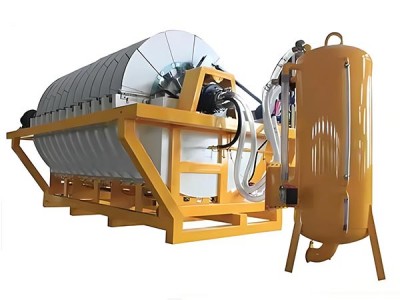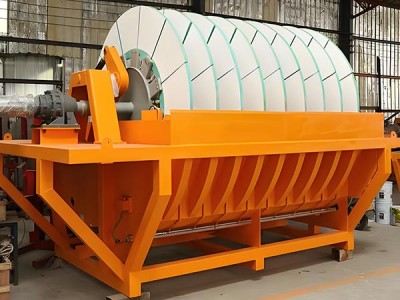In recent years, vacuum belt filter press have gradually become core equipment in the gypsum dehydration process field due to their outstanding high-efficiency separation characteristics. They occupy a key position in the treatment process of industrial by-product gypsum such as desulfurization gypsum and phosphogypsum, laying a solid foundation for the efficient utilization of gypsum resources.
Advantages of vacuum belt filter press in gypsum dewatering
Excellent dehydration performance
Utilizing vacuum negative pressure and continuous operation of the filter belt, the moisture content of gypsum can be precisely and stably controlled between 10% and 15%, meeting the requirements for subsequent storage, transportation, and further processing.
High degree of automation
Equipped with an advanced PLC control system, the entire process from feeding, filtration, to rinsing is fully automated, reducing manual labor and lowering labor intensity.
Excellent adaptability
Capable of processing gypsum slurry of varying concentrations. The filter belts are corrosion-resistant, ensuring a service life of 5–8 years for the equipment.
However, in actual application, its limitations have become increasingly apparent.
High energy costs
The vacuum pump, as the key power source for maintaining vacuum pressure and achieving dehydration, requires continuous and stable operation, leading to high electricity consumption, which inevitably increases the company's production costs.
Filter belt blockage issues
Gypsum particles are small and tend to accumulate in the gaps of the filter belt during prolonged operation. This not only reduces the filter belt's permeability but also results in frequent shutdowns for cleaning and maintenance, thereby increasing labor and material costs.
Strict requirements for slurry pretreatment
If the slurry contains impurities such as metal oxides or sand and gravel, these impurities will frequently friction against the filter belts during the filtration process, accelerating the wear and tear of the filter belts. This further increases equipment maintenance costs and also affects production schedules.
The following solutions can be adopted to address the limitations of vacuum belt filter presses in gypsum dewatering.
High energy consumption costs
1. Variable frequency vacuum pump and staged vacuum control
Using dynamic vacuum adjustment technology, the vacuum pump parameters are adjusted in real time based on the moisture content of the gypsum. When processing high-viscosity slurry, high vacuum levels are avoided, reducing energy consumption by 15%-20%.
2. Optimizing Oxidation Airflow Control
Monitoring the current and outlet pressure of the oxidation fan enables timely detection of scale buildup in the air ducts. During maintenance of the absorption tower, the air ducts are cleaned to ensure that the oxidation airflow is appropriately matched to the SO₂ concentration, preventing the crystallization of soluble sulfites and reducing dehydration resistance.
Filter Belt Blockage Issues
1. Deep Cleaning Solution: Utilize high-pressure water backflushing combined with ultrasonic cleaning technology to thoroughly clean stubborn residues in the filter belt pores. Simultaneously establish an inspection mechanism to ensure the coverage rate of the flushing nozzles meets standards.
2. Filter Cloth Selection: Select filter cloth with appropriate pore size based on the specific distribution of gypsum particles, while also considering corrosion resistance.
3. Intelligent Adjustment of Process Parameters: Strengthen control over the oxidation process to reduce gypsum viscosity, making it easier to filter. Reasonably adjust the pressure of the cyclone station and the number of operating cyclones to reduce the workload on the filter belts from the source.
Strict Requirements for Slurry Pretreatment
1. Source Impurity Control: Strictly control the quality of limestone to reduce the content of impurities such as clay and sand in the raw materials. Optimize the dust removal system to prevent heavy metal ions in fly ash from inhibiting the SO₂ absorption reaction.
2. Wastewater discharge management: Regularly discharge wastewater from the absorption tower, controlling Cl⁻ concentration below 10,000 ppm to prevent chlorine ions from reacting with calcium ions to form CaCl₂, which can block the gaps between gypsum crystals.
3. Optimize cyclone operation: Regularly clean the internal structure of the cyclone, inspect the wear condition of the sand discharge nozzle, and promptly replace the sand discharge nozzle when the bottom outlet liquid exhibits a steady flow state.
Summary
Vacuum belt filter press machines are widely used in the gypsum industry. They can control the moisture content of gypsum to 10%-15%, and are highly automated and adaptable, making them very popular. Yinuo Machinery is a manufacturer of vacuum belt filter for gypsum machines. Companies in need are welcome to send an email to contact us. Email: info@vacuumdrumfilters.com.


